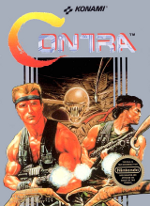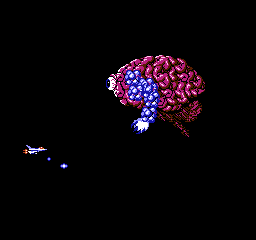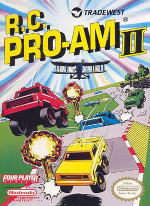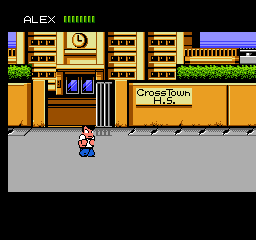The Essential Nintendo Entertainment System (NES) Games
by Matt Keller on Mar.12, 2012, under The Essentials

The Nintendo Entertainment System is a difficult system when it comes to picking the best games. It’s one instance where the phrase “rose tinted specs†really comes into action. Many great video game series were started on the NES, but many of them do not hold up today. We have selected the absolute best games on the system to showcase in this article. If you want to start collecting games for the NES, these are ones that you absolutely must get.
The Essentials are games selected by the RGA team (along with a few highly knowledgable friends) and are the games we consider to be the best on the system – without question.
Our criteria for this list was simply that the game must be available in English, not just PAL. That does rule out a couple of quality Famicom only releases, but we will cover them in our upcoming NES Imports feature. Read on to find out our selections!
Games are listed in no specific order.
Super Mario Bros. (Nintendo, 1985)
 |
There should be no argument here. Super Mario Bros. was arguably the game that defined the NES, hooking a new generation of video game players and redefining expectations of what home video games could deliver.
The scrolling platformer boasted graphics in excess of anything released at the time, a catchy soundtrack, wonderfully designed levels and a decent challenge. It’s an extremely well executed package which was leaps and bounds ahead of the games that came before it. It was also most NES players first taste of what the system had to offer, being bundled in with the majority of NES systems sold, either alone, or as part of a multi-cart, first with Duck Hunt and other games later on. |
 |
 |
—
The Legend of Zelda (Nintendo, 1986)
 The primitive capabilities of the Atari 2600 and Intellivision greatly limited their power to create detailed game worlds, leaving such imaginative creations to be solely the domain of the home computer owner. That changed with The Legend of Zelda. The primitive capabilities of the Atari 2600 and Intellivision greatly limited their power to create detailed game worlds, leaving such imaginative creations to be solely the domain of the home computer owner. That changed with The Legend of Zelda.
Where previous action adventure games on consoles were limited, guided affairs, The Legend of Zelda simply plonked players in the middle of Hyrule with minimal instruction – get eight Triforce pieces, defeat Ganon and save Princess Zelda. How you did that was really up to you – you had to find the dungeons where the pieces of Triforce were kept, and the necessary equipment to get through those dungeons. Fortunately, the game came with a map and battery back-up to keep your progress. There was a distinct focus on exploration in the game, heavily influenced by designer Shigeru Miyamoto’s childhood adventures in the Japanese countryside. While the series would get bigger, bolder and better, the NES original holds a special spot in many gamers’ hearts. |
 |
 |
—
Mega Man 2 (Capcom, 1988)
 |
Capcom’s Mega Man was an unexpected hit for the company after its lukewarm reception in Japan. Fortunately, the development staff had been working on a second game in the series in their own time
Mega Man 2 took everything that was good about the original game and made it better. While the game more or less looks the same, the level design is far better, the difficulty level is more fairly balanced, the character design is brilliant, and the soundtrack is arguably one of the best of all time. Debates will probably rage until the end of time as to whether Mega Man 2 or Mega Man 3 is the best iteration of the series on the NES, but we’re siding with the former. |
 |
 |
—
Super Mario Bros. 3 (Nintendo, 1988)
 Super Mario Bros. 3 is, without a doubt, the best game on the NES. It’s a major expansion of the ideas delivered in the original Super Mario Bros. with greater technological proficiency. Mario and Luigi return with new abilities – namely the ability to fly by grabbing the Super Leaf power up. The brothers can also utilise a frog suit for enhanced swimming, the Hammer Bros. suit for some extra fire power, and old favourites like the Super Mushroom and Fire Flower. Super Mario Bros. 3 is, without a doubt, the best game on the NES. It’s a major expansion of the ideas delivered in the original Super Mario Bros. with greater technological proficiency. Mario and Luigi return with new abilities – namely the ability to fly by grabbing the Super Leaf power up. The brothers can also utilise a frog suit for enhanced swimming, the Hammer Bros. suit for some extra fire power, and old favourites like the Super Mushroom and Fire Flower.
The game has a much greater sense of character than its predecessor. Each world is a fully realised location, completely different from the others. Every level within these worlds is masterfully crafted. Bosses are no longer repeat bouts against the same opponent, but clashes against unique opponents – Bowser and his seven children, each modelled on a famous musician. While Super Mario Bros. 3 is a testament to Nintendo’s qualities as a software developer, it also shows how the company’s unequalled knowledge of their own hardware and control over cartridge manufactured gave them a distinct advantage over the third party licensees. Nintendo’s custom MMC3 chip allowed them to wring every last scrap of power out of the ageing system – something that their competitors just couldn’t do. Fortunately for all of us, it helped them make one of the best games of all time. |
 |
 |
—
Kirby’s Adventure (Nintendo, 1993)
 |
Masahiro Sakurai’s Kirby character was a smash hit for HAL Laboratory on the Game Boy, practically saving the company from certain closure. The game was well received, but it was not until Kirby’s Adventure that the character began to evolve into the one we know and love.
Kirby’s Adventure was the first game in the series where the character gained his copy ability, which is now the character’s trademark attribute. This gives you a variety of options with which to attack the game’s levels and bosses. There is also a variety of mini-games to play in between stages. The game is beautiful – far better looking than most games on the system and it has an excellent soundtrack. It may be a little on the easy side, but Kirby’s Adventure is quite possibly the best game in the series. |
 |
 |
—
Mike Tyson’s Punch Out!! / Punch Out!! Featuring Mr Dream (Nintendo, 1987/1990)
 Nintendo’s Punch Out!! series was somewhat popular in the arcades, but the game really grew the beard when it came home. The NES version of the game was not quite as technically accomplished, but what it lacked in graphical prowess, it more than made up for in gameplay. Nintendo’s Punch Out!! series was somewhat popular in the arcades, but the game really grew the beard when it came home. The NES version of the game was not quite as technically accomplished, but what it lacked in graphical prowess, it more than made up for in gameplay.
While it appears to be a boxing game on the surface, Punch Out!! is more like a puzzle-action game, requiring fast reflexes and a keen eye. Each boxer has an amusing design and a pattern which you need to work out, but you also need to be able to move fast enough to dodge the never-ending flurry of attacks from your opponent. The challenge rises as you defeat each boxer, right up to the fierce and damn near impossible to beat Mike Tyson, who was the world heavyweight champion at the time of the game’s release. The game was re-released by Nintendo as Punch Out!! Featuring Mr Dream in 1990 after Nintendo’s licensing agreement with Mike Tyson expired. Some people believe that it was due to Tyson’s legal troubles that year, but the license expired prior to those events. |
 |
 |
—
Duck Tales (Capcom, 1989)
 The NES is home to many absolutely abhorrent licensed games. Many publishers operated on a model where they would exploit existing entertainment hits and create games based on them as quickly as they could on the tiniest budget possible. This was not the case at Capcom who licensed a number of popular Disney properties and produced quality games, the best of which was Duck Tales. The NES is home to many absolutely abhorrent licensed games. Many publishers operated on a model where they would exploit existing entertainment hits and create games based on them as quickly as they could on the tiniest budget possible. This was not the case at Capcom who licensed a number of popular Disney properties and produced quality games, the best of which was Duck Tales.
Developed by a team consisting of Mega Man alumni, Duck Tales takes a novel approach to the property, designed around providing fun gameplay while paying respect to the license. You wouldn’t pick Scrooge for being one to bounce around on a pogo stick cane, or use that very same cane to hit blocks like golf balls, but it just works. Perhaps the best thing about Duck Tales is the music. The Moon theme is arguably one of the greatest pieces of music to come from the NES – just listen to it, and you’ll agree. |
 |
 |
—
Double Dragon II: The Revenge (Technos Japan Corp., 1989)
 The arcades quickly zoomed ahead of the NES in terms of technical capabilities, meaning home ports of games were no longer up to scratch and had to have features left out. The original Double Dragon was one such game, losing its trademark 2 player co-operative mode. The arcades quickly zoomed ahead of the NES in terms of technical capabilities, meaning home ports of games were no longer up to scratch and had to have features left out. The original Double Dragon was one such game, losing its trademark 2 player co-operative mode.
Technos took a different approach for Double Dragon II: The Revenge, making the NES game an expanded adaptation of the arcade game. It still had the same theme and basic plot as the arcade game, but was an entirely different – and I dare say – better game than the arcade original. The NES version features nine stages instead of four, new story scenes in between levels and a greatly expanded move set. One particularly spectacular move is the super knee attack, which sends your opponent flying across the screen. Technos later released an enhanced version of this game for the PC Engine CD – it was more technically accomplished with better graphics and a remixed CD soundtrack, but it doesn’t play quite as well. |
 |
 |
—
Contra/Probotector (Konami, 1988)
 Konami’s Contra pits you against an invading alien force with ridiculous numbers of expendable troops. Fortunately for you, you’ve got equally ridiculously powerful weaponry. The end result is a run and gun shooter that’s difficult but thrilling. Konami’s Contra pits you against an invading alien force with ridiculous numbers of expendable troops. Fortunately for you, you’ve got equally ridiculously powerful weaponry. The end result is a run and gun shooter that’s difficult but thrilling.
Contra was a hit in the arcades, and the NES version was just as good. Although technical limitations prevented it from being a perfect port, Konami compensated by lengthening some of the stages and throwing in extra bosses. Most importantly, Konami managed to keep in the two player mode, which is a key element of the game. What would Contra be without the dread of facing endless waves of enemies without a friend beside you? PAL gamers were treated to a different version of the game – Probotector. Due to anticipated clashes with German censors, Konami decided to transform all human characters in the game to robots. The series continued this tradition until the release of Contra: Legacy of War on the PlayStation. |
 |
 |
—
Metroid (Nintendo, 1986)
 Metroid is a very different game when compared to other action/platformers on the NES. It’s not bright and cheery – rather it’s dark, dreary and lonely. It’s arguably one of the best games NES games developed by the R&D1 division at Nintendo. Metroid is a very different game when compared to other action/platformers on the NES. It’s not bright and cheery – rather it’s dark, dreary and lonely. It’s arguably one of the best games NES games developed by the R&D1 division at Nintendo.
Heavily influenced by the film Aliens, Metroid puts you in control of a lone bountry hunter, Samus Aran, who has landed on the planet Zebes in search of the Space Pirates. The Space Pirates, led by Ridley, have stolen several creatures called Metroids from the Galactic Federation, planning to use them as bio-weapons. A huge game world, variety of upgradeable weapons and some excellent boss encounters make Metroid a real classic. Some like to say that age hasn’t been particularly kind to Metroid, but I take the view that the Metroid sequels are just that damn good that they tend to overshadow the original game. |
 |
 |
—
Life Force (Konami, 1987)
 Life Force, alternatively known as Salamander, is a spin-off from Gradius that I would argue is superior to the original. The NES version is particularly competent, and arguably a better conversion than Gradius. Life Force, alternatively known as Salamander, is a spin-off from Gradius that I would argue is superior to the original. The NES version is particularly competent, and arguably a better conversion than Gradius.
It borrows the basic power up system and ship design (the Vic Viper) from Gradius, but features both horizontal and vertical shooting stages. The stage and visual design is really outstanding – a mix between organic alien life and twisted machines. It’s not quite as hard as some other shooters out there, but it can be a challenge until you learn the flow of the game. There are a few notable changes from the Life Force arcade game, namely the power up bar – the original game used icons, while the NES port uses the Gradius power up system and some stages and bosses are switched up – but they do not have any kind of detrimental effect on the experience. |
 |
 |
—
Castlevania III: Dracula’s Curse (Konami, 1989)
 Each of the three Castlevania games on the NES has their merits – yes, even the bullshit hard Simon’s Quest, but Dracula’s Curse is the total package. Each of the three Castlevania games on the NES has their merits – yes, even the bullshit hard Simon’s Quest, but Dracula’s Curse is the total package.
Dracula’s Curse combines elements of Simon’s Quest’s non-linearity with the platform heavy gameplay of the first game, and introduces a new character switching system which adds additional depth. The game can vary greatly based on which characters you choose to use. Trevor Belmont takes the role of the token whip cracker in this iteration, but is joined by three companions – Grant DaNasty, Sylpha Belnades and Alucard, the half-human son of Dracula. Excellent combat, tight platforming, branching paths and multiple endings make Dracula’s Curse a game that you can keep on coming back to, time and time again. |
 |
 |
—
Tetris (Nintendo, 1989)
 It’s not the first version of the game or even the best-selling version, but there’s something infectious about the NES version of Tetris. Perhaps it’s the use of Dance of the Sugar Plum Fairy from The Nutcracker as the A type music. It’s even the version of choice for the Tetris World Championships, which is sponsored by creator Alexei Pajitnov. It’s not the first version of the game or even the best-selling version, but there’s something infectious about the NES version of Tetris. Perhaps it’s the use of Dance of the Sugar Plum Fairy from The Nutcracker as the A type music. It’s even the version of choice for the Tetris World Championships, which is sponsored by creator Alexei Pajitnov.
Whatever that X factor may be, you really can’t go wrong with this version of Tetris. |
 |
 |
—
StarTropics (Nintendo, 1990)
 |
Nintendo’s first game developed with a Western audience in mind is quite the little gem. It’s a little bit like a more linear version of The Legend of Zelda, albeit with a yo-yo instead of a sword.
Players control Mike Jones, a young boy with a knack for pitching, who is on a quest to rescue his abducted uncle, Dr. Jones. On Mike’s quest, you’ll travel through various islands and caves, find new equipment and take on all kinds of weird and wonderful creatures. The game is often remembered for a little bit of early alternate reality game action, where players had to dip a letter packed in with the manual in water in order to get a code to progress in the game. This kind of makes it difficult to find a copy of the game in good condition. |
 |
 |
—
R.C. Pro-Am II (Rare, 1992)
 Racing games on the NES generally are not very good, but R.C. Pro-Am II is the exception. It’s arguably Rare’s finest effort on the 8-bit console, if not one of their finest releases ever. Racing games on the NES generally are not very good, but R.C. Pro-Am II is the exception. It’s arguably Rare’s finest effort on the 8-bit console, if not one of their finest releases ever.
Whereas most racing games at the time were presented from behind the car with the player essentially trying to keep the car on the road, Pro-Am II utilises an isometric perspective. The change in viewpoint allows for much more distinctive tracks and greater control over your vehicle. It’s not all just about navigating the track at the fastest speeds, as R.C. Pro-Am II has all kinds of power ups which players can use to destroy their opponents cars. Since coming in 4th place in a given race is an instant game over, knocking out that blasted yellow car with a well timed strike just before the end is oh-so-satisfying. So why R.C. Pro Am II and not the better known original? Multiplayer. The first game is a single-player only affair, while Pro Am II adds support for up to 4 players. It’s a little harder to find, but well worth the effort. |
 |
 |
—
Donkey Kong Classics (Nintendo, 1988)
 Donkey Kong and Donkey Kong Junior are two of Nintendo’s greatest arcade hits, and while you can technically get them separately, Donkey Kong Classics combines the two games onto a single cartridges. Donkey Kong and Donkey Kong Junior are two of Nintendo’s greatest arcade hits, and while you can technically get them separately, Donkey Kong Classics combines the two games onto a single cartridges.
The NES port of Donkey Kong lacks the cement factory level, but adds the title theme that is now synonymous with the series. Donkey Kong Jr. is relatively unchanged from the arcade version. Regardless of any omissions, both games are fantastic in their NES iterations. |
 |
 |
—
River City Ransom/Street Gangs (Techos, 1989)
 |
 |
—
Think we’ve missed something out? Argue your case in the comments section, and we’ll consider it for inclusion.
Leave a Reply
You must be logged in to post a comment.




